20 reasons to visit the Canary Islands
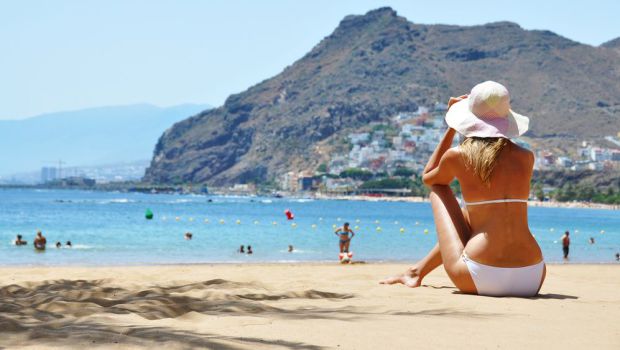
{module Ads Elite (xx)}
Gentle beaches, perfect waves and an eternal summer are not the main items on this list. Read how to spend a grand vacation near the coast of Africa The singing birds, canaries, brought to Europe in the XVI Century, were given the name of their origin – the Canary Islands. In their homeland, canaries are not yellow, but green, and the Islands them - selves are very colourful: the terracotta volcano tuff, the white snow of the mountain peaks, the black sand of the beaches, and the ruby juice of the dragon tree…

Listen to the orchestra
Auditorio de Tenerife is a fashionable symbol not only of the city of San - ta Cruz, the Canary Islands, and Spain, but also the contemporary world architecture. The futuristic aesthetics of the architect Santiago Calatrava are rightfully characterised by the term ‘bio-tech’: the concert hall looks like a huge shell. The home of the Canary Symphony Orchestra has two concert halls, two galleries, and two terraces with wonder - ful views of the ocean.

Talk to a parrot
Loro Parque Zoo, receiving 40 million visitors annually, is deservedly proud of its collection of parrots: here there are 4,000 of them, though not all of them speak. In addition to birds and land animals, you will see aquatic fauna – performances by dolphins, killer whales and sea lions, trained like circus poodles. Besides this, the park is home to an impressive colony of reptiles, though the crocodiles do not perform.

Boil potatoes
The most popular dish in the Canary Islands is simple ‘wrinkled potatoes’ cooked with coarse sea salt, and stewed for half an hour on very low heat. They are served with mo - jo sauce for which the basic ingredients are olive oil, wine vine - gar and garlic – after this, in every village people add something of their own: cilantro, crushed almonds, chili or lemon juice.
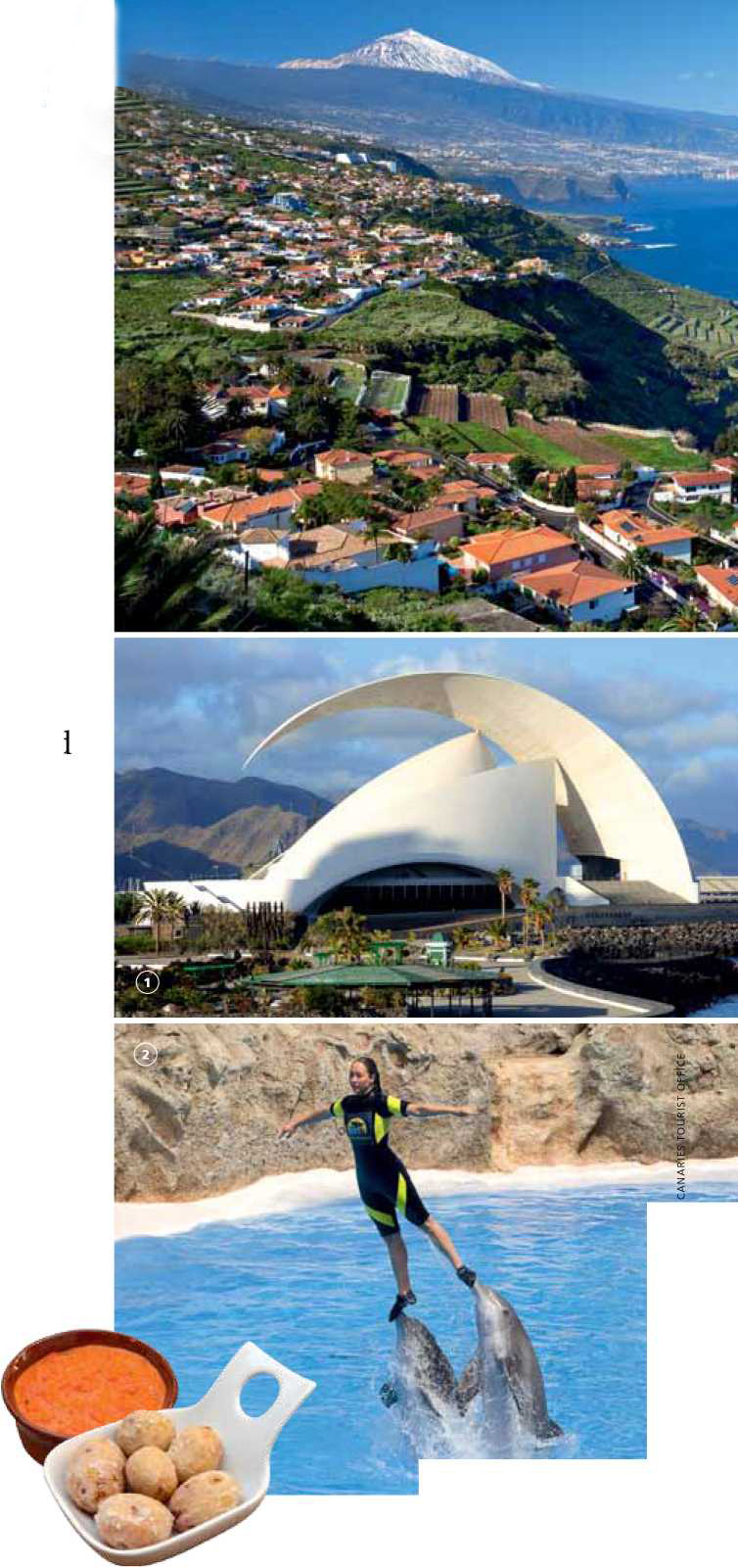

Buy some cheese
Prior to 1956, the capital of Fuerteventura Island was called Puerto de Cabras – ‘goat port’. Actually the goats (a special island breed known for its incredible birth rate and milk yielding capacity) are still the pride and glory of the locals. The best buy on the island is the outstanding goat cheese made with sheep’s milk and flour from roast wheat or corn.


Learn whistling
One of the main attractions of La Gomera Island is the whistling language Silbo Gomero – a special way of speaking, by whistling the words. It was invented by the ancient goatherds to negotiate through the gorge without radios or cell phones, and at first, this communication was based on the vocabulary and phonetics of the Guanches tribe. Now, the whistle-language has four vowels, six consonants and more than 4,000 whistling words. This Canary folk heritage is learned in local primary schools.
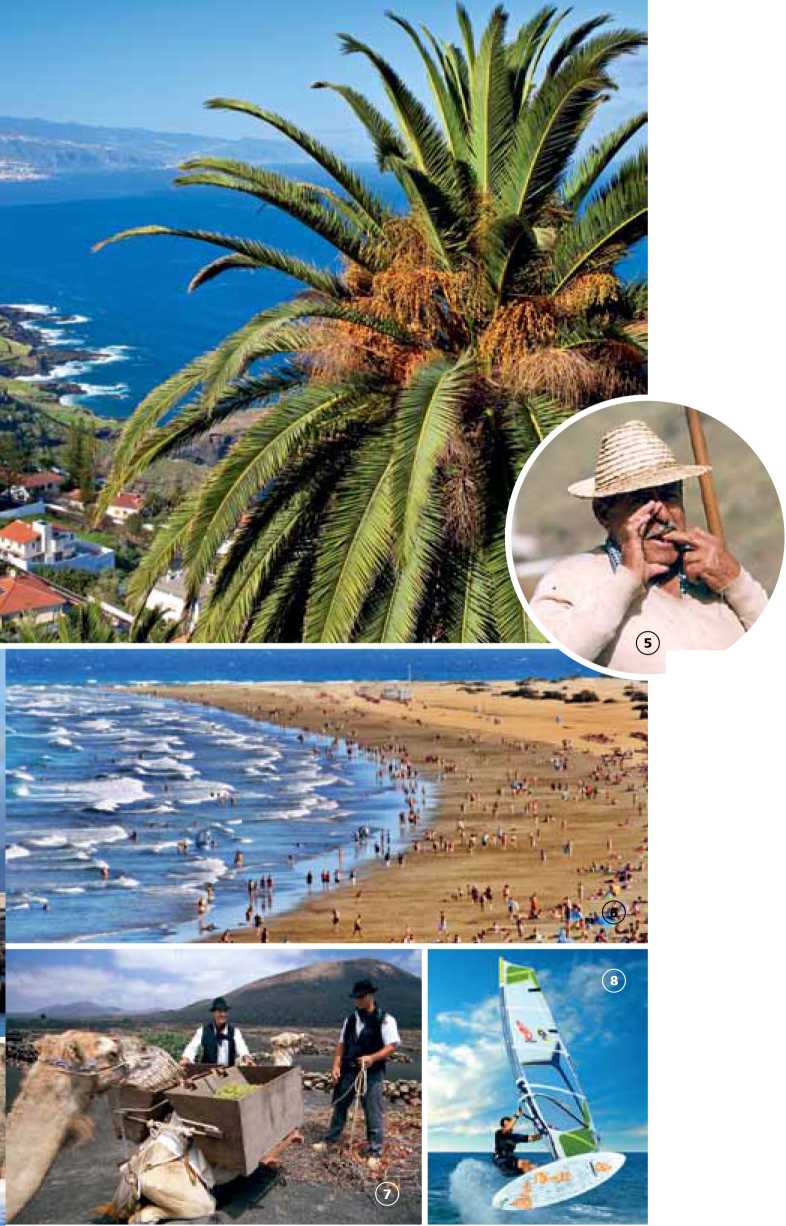

Take the plunge and hang out
Mass tourism began to develop in the Canary Islands in the 1960s, when the European middle class stopped considering holiday flights to be a luxury. Twenty kilometres of coast in the town of Maspalomas were cultivated first. Today, Maspalomas never sleeps; the resort is known for its long string of sand dunes, vi - brant nightlife and goodwill towards LGBT tourists. Those who get bored lying on the beach, can get rid of their boredom in Los Palmitos Park, with its huge collection of cacti.

Taste white wine
Despite the limited vineyard area, which are mostly located in the fields of volcanic ash, the Canary Islands are famous for their alcoholic variety. The white wines of Lanzarote Island are considered the finest, from dry to sweet, mostly varieties of Malvasia and Muscat. The specific lo - cal landscapes force innovations: in the village of La Geria, for example, the vineyard is protected from the wind by an arched stone wall, which adds to each bottle a degree of fortitude and a drop of sun. The best yields of recent decades are considered the crops of 2002 and 2010.

Raise sails
Fuerteventura can be translated as ‘strong wind’: on this island the hot sirocco winds from the Sahara blow harder than on Tenerife or Gran Canaria. Fuerteventura has the best beaches with fine white sand and the widest entertainment choices for fans of windsurfing, paragliding, scuba diving, kayaking and wake surfing. With the beauty of its landscapes, it is not inferior to its neighbouring islands, but with almost no historical or architectural monuments.

Go down
The volcanic cave Cueva de los Verdes was formed on Lanzarote about five thousand years ago by the eruption of a volcano – the river of lava burned the rock, forming a six-kilometre underground corridor with access to the ocean. The cave has a concert hall for 500 people, and a restaurant on the shores of an underground lake, in which blind albino crabs frolic.

Visit Columbus
During the first expedition to the New World, in August 1492, Columbus stopped at the Canary Islands, to fix the leaking Pinta. The resources to repair the ship were provided by the local governor, whose residence on the Gran Canaria is now the house of Columbus Museum. The exhibition is dedicated to the naval campaigns, the history of the Canary Islands and relations between Spain and the Americas.


Praise the Mother
In July, at the gathering place of the jet-set on Tenerife, Puerto de la Cruz, they hold spiritual celebra - tions in honour of the Virgin Mary. The Virgin protects sailors and fishermen, and these constitute the main columns of the processions, singing hymns of thanks. The fiesta starts in the morning, and goes until late evening, which ends with fireworks.

Return to the Miocene
The name Garajonay is formed from the names of the local Romeo and Juliet, who supposedly made their mortal leaps from this high mountain for the sake of love. Now this picturesque corner of La Gomera is a National Park with relict trees. The park is home to species of frogs, lizards and pi - geons, which cannot be seen anywhere else in the world. Wooden statues in the style of naive art resemble the poor lovers Gara and Jonay.
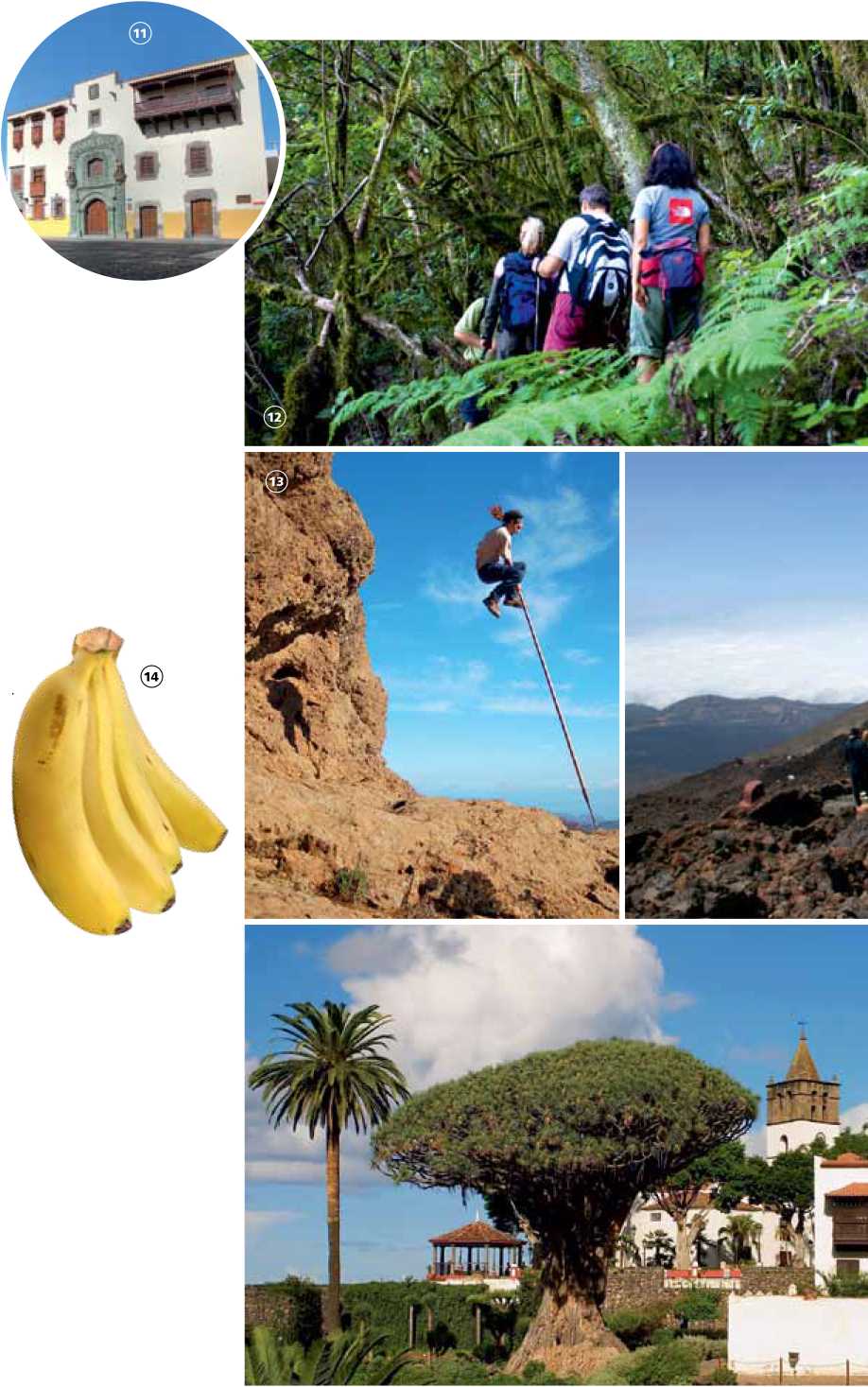

Jump high
A popular Canary pastime is the ‘Shepherd’s Jump’, a competitive long race, which requires participants to jump over obstacles with the help of a three-metre wooden pole. herders on the Islands have formed a federation with thousands of athletes, organising dozens of courses to practice jumping techniques. And for those who do not plan to turn into a grasshopper man, the Canary Islands offer decent alternatives – a special kind of wrestling and fencing with long sticks.

Tear off the banana
The basis of the traditional economy of the Canary provinces is the cultivation of dessert bananas. Over 300,000 tons are exclusively exported to the E u. Beside the fruit, banana ketchup, banana chips and banana liqueur are popular here. On the islands of Tenerife and Palma no visit is complete without a seeing the plantations and greenhouses.

See the eyepiece
The observatory on the Boys’ rock (2,400 m) was founded in 1985 by scientists from four European countries. Among its outstanding scientific instruments, are a telescope with the world’s highest-resolution images of the Sun and the Great Canary Composite Mirror reflector – 10 meters in di - ameter. By appointment only, anyone can admire these wonderful eyepieces, but only in the morning – the rest of the time, astronomers are busy with close observations of the Milky Way and transNeptunian objects.

To raise the ‘Jolly Roger’
The fortress of Santa Barbara was built by the Spaniards 500 years ago, to monitor the coastline and protect locals from pirates. At the end of the XVI Century it could shelter from enemies the entire population of what was then the capital of the island. The town of Teguise has grown exponentially since then, so in case of emergency, the fortress will not be able to defend its inhabitants. Today there is an entertaining museum dedicated to the history of piracy inside.
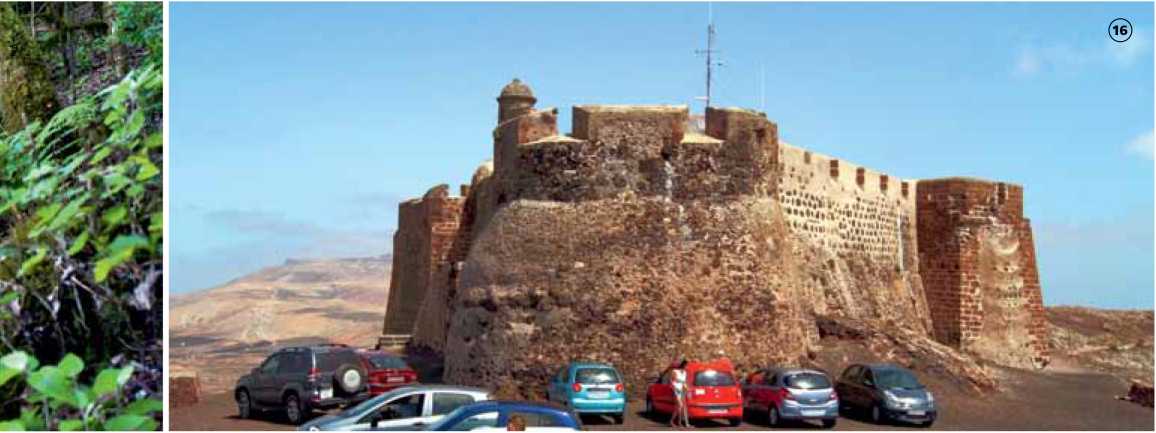

Climb the volcano
Teide Volcano (3,718 m), the highest peak of Spain and the Atlantic, can be reached only with the permission of the National Park Administration. Such strictness is understandable – in the crater of Mount Teide lives the demon Guayota, who has dragged off under the ground Mahek, the god of light. At the same time, for a hundred years already, the old evil spirit sleeps, and since 1909, when the volcano erupted last, tourists have been able to safe - ly enjoy the surrounding Martian landscape.

Drink some blood
The oldest dragon tree in Tenerife is believed to be 3,000 years old, al - though some sceptics say that this is too much. however, it is well established that the giant of the town of Icod is the largest dracaena in the world (18 metres in height, and 20-metre in circumference at the trunk). Inspection of the botanical relic can be combined with degustation: the tree provides red juice, from which the locals make a liquor – ‘the blood of the dragon’.

Get on a bike
Experts advise planning a bike tour of the island of Gran Canaria in the spring. Along the 200 km long circular track it would be better to move in a clockwise direction, starting from the beaches of Maspalomas. A sensible journey with stops, for example, with a visit to the top of Pico de Nieves, will take about a week. On Gran Canaria, there are excellent roads, even in the mountains, as well as courteous drivers, even in the capital Las Palmas.
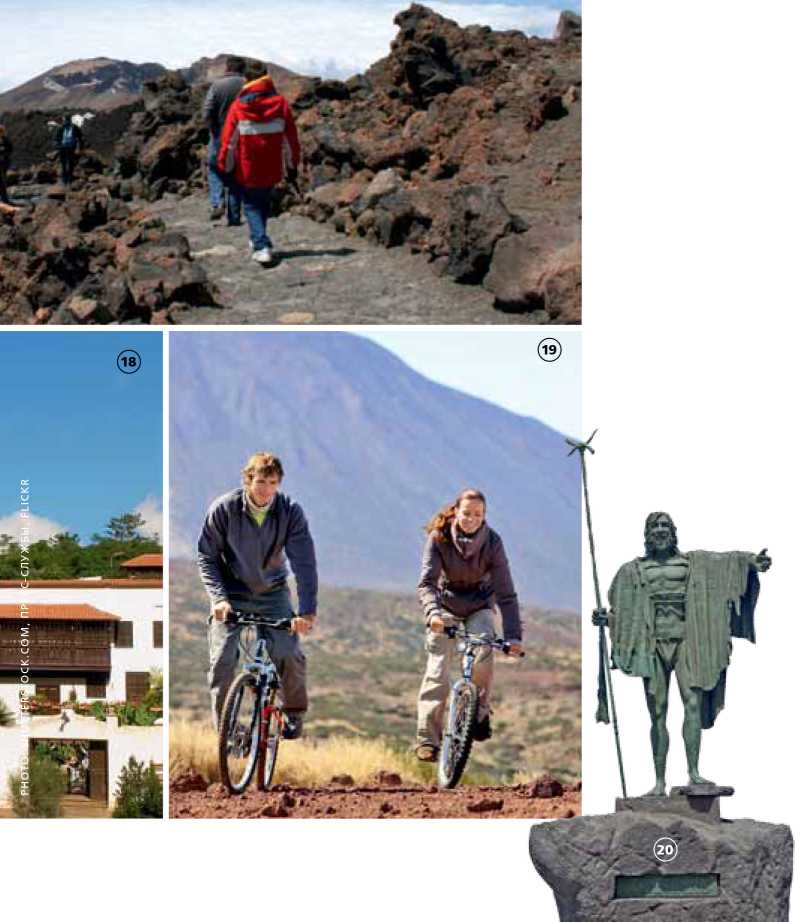

Recall the past
Before the advent of the Spaniards in the Canaries, the Guanches tribe lived here. The natives stubborn - ly resisted to the colonisers, so that they were either killed or sold into slavery. Now the white man diligently carries the burden of his guilt: monuments are erected to the extinct tribe, the most famous one being the monument to the lead - er Beneharo. Traces of the material culture of the Guanches are few, but in people’s memories, there are romantic stories. One of them is presented in the movie ‘The Island Princess’ with Marcello Mastroianni.
{ (travel)}
